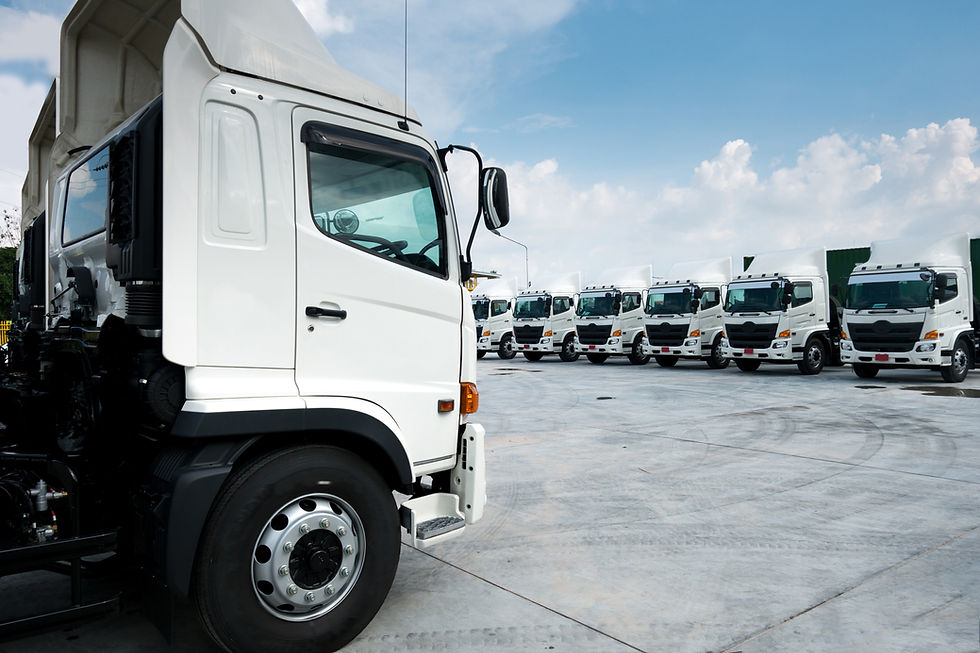What is an Equipment Finance Agreement (EFA)?
- National Truck Loans

- Nov 21, 2022
- 4 min read
Updated: Mar 8, 2023

An equipment finance agreement (EFA) is like a loan, security agreement, and promissory note all packaged together into a single document. EFAs also contain some unique features that make them one of the most popular and versatile equipment financing options.
A Little Bit of Loan, a Little Bit of Lease It’s easy to confuse an EFA with a simple interest loan, since these two financing options look very similar from the financing applicant’s point of view. However, EFAs contain some unique provisions that make them more like a blend of a loan and a lease.
How Is an EFA both Similar and Different From a Bank Loan? An EFA is like a loan because it creates ownership of the equipment, the equipment shows up on your business’ balance sheet as an asset, you get the financing up-front and purchase the equipment outright, then pay back the financing over time. With a traditional loan, you’ll receive stated interest rates in your loan agreement, and when you get a balance statement, you’ll see it broken down into principal and interest. EFAs don’t work this way. EFAs have no stated interest rates. Instead of interest rates, EFAs have “Finance Charges", which are rolled into fixed payments that you’ll make on a regular basis (usually monthly). These fixed payments will last for the life of the financing term. So, during the repayment process, an EFA works more like a lease agreement than a loan. Independent financing partners or direct lenders that offer EFAs provide some distinct advantages compared to bank loans and in some ways it is more flexible. Banks don’t have the flexibility of other types of lenders since they operate in such a highly regulated space. As a result, bank loans often contain loan covenants with restrictive provisions that will require your business to maintain a certain debt service coverage ratio. This type of covenant can make it difficult for your business to borrow money until the loan is fully paid off. If you violate the loan covenant, the bank may demand that you pay the full outstanding balance on the loan. Bank loans may also have variable interest rates that are tied to market rates, which involves more risk and uncertainty. If the market rate goes up over the term of your loan, then so will your financing interest rate. How Is an EFA Different From a Lease?
An equipment lease is a financing option where a business owner rents a piece of equipment for a fixed term at fixed monthly payments. At the end of the term, the business operator has the option to turn in the equipment or purchase it for an extra fee.
An EFA is described by industry experts to be a bridge between a lease and a loan. It has some of the characteristics of a lease, but it has the language of a loan. Unlike a lease the borrower, in lieu of lessee, is the owner of the equipment. Equipment ownership is one of the main differences between equipment leases and EFAs. While nearly every equipment lease agreement gives the lessee the option to buy the equipment at the end of a fixed period, the terms of the sale can vary. When you lease equipment, the end of the term almost always ends in more payments. You can turn the equipment in and buy or lease new equipment, or you can pay an extra fee to purchase the leased set of equipment. EFAs automatically assign ownership to the "borrower" or at the end of the fixed term; no extra payments are required. When you finance equipment using an EFA, you'll receive the title to the equipment after making the last payment. With title in hand, you can borrow from lending institutions using the equipment as collateral.
Customized Payments with an EFA
EFAs can allow for customized equipment finance payment terms that can align with industry-specific cashflow cycles. A custom payment structure aligns loan payments with expected cash flow. This can make it easier for the borrower to make payments, while income is flowing in and cash on hand. Custom payment solutions can include Step Up/Step Down structure where payments are higher in certain months of the year than other months, or Seasonal where payments are structured to reflect seasonal variations in business activity and income.
What are the Tax Advantages of an EFA?
An EFA enables your business to receive Section 179 benefits and claim bonus depreciation in the same year you acquire the equipment. Therefore with an EFA the borrower can apply the full value of the asset on the balance sheet and can deduct 100% of depreciation "upfront" on their Federal tax return. This accelerated depreciation method means a company may pay substantially fewer taxes in the tax year in which they claim bonus depreciation. Under the Tax Cuts and Jobs Act, the annual deduction limit is $1 million and the highest annual investment limit for qualifying equipment purchases is $2.5 million.

Applying is easy! Just fill out our our online application one of our commercial financing experts will get in touch to help walk you through the application process and determine which option is right for you and your company.




Comments